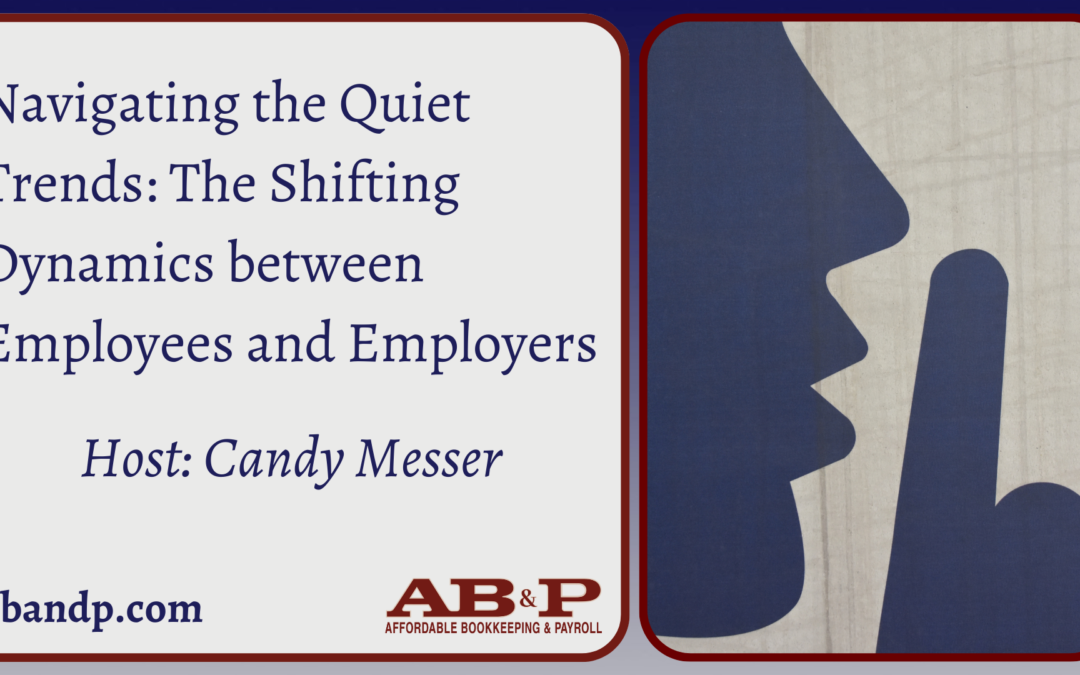Are you an employer that has noticed a shift in the hiring landscape? Since the pandemic began, there are trends that have become apparent which highlight a shifting of power between employees and employers, presenting both challenges and opportunities for you to navigate.
Quiet Quitting
The first trend is “quiet quitting,” where employees do the minimum necessary to maintain the status quo. CFOs have identified this as a significant problem, with unengaged employees costing companies a substantial amount of money. Participants in a survey emphasize the importance of finding a balance between productivity, engagement, and morale, especially when implementing policies like return-to-office initiatives and budget cuts.
Quiet Hiring
Another trend is “quiet hiring,” a strategy used by executives to acquire the skills they need for growth without adding new operating costs. This could involve hiring temporary workers or expanding the responsibilities of current employees. While there may be benefits to outsourcing certain tasks, participants caution against overreliance on freelancers or burdening existing employees with excessive workloads, which may lead to reduced commitment and higher turnover rates.
Quiet Firing
“Quiet firing” has also surfaced, referring to managerial choices that increase the likelihood of an employee leaving on their own accord, without explicitly firing or laying them off. Whether this is a response to poor performance or as a means to push out unwanted workers, this trend has been prevalent in some workplaces.
Quiet Promoting
Another issue is “quiet promoting,” where employees receive added responsibilities without the associated title or compensation for a promotion. This is a common experience for many U.S. employees. To address this in your company, ensure that job titles match responsibilities and encourage open dialogue and training for managers to appropriately recognize and reward employees’ efforts.
Quiet Thriving
On a more positive note, “quiet thriving,” encourages employees to make proactive changes to prevent mental burnout. This trend has proven beneficial for both employers and employees, resulting in more dedicated and contented team members. Support your staff in finding ways to make their workdays more fulfilling and less rigid, such as joining work-related groups or advocating for causes.
These “quiet” trends have significant implications for the employee-employer relationship. Be aware of these movements and take proactive measures to foster a positive and productive work environment that benefits both parties involved. By recognizing and addressing these situations, you can position your company for success in a post-pandemic world characterized by changing dynamics and challenges in the workforce.
